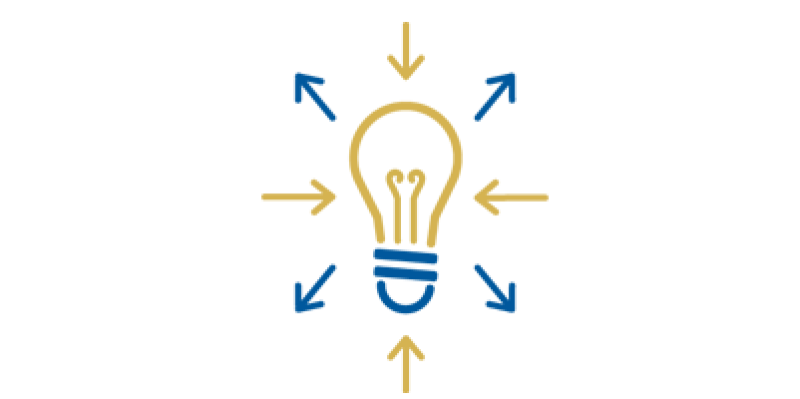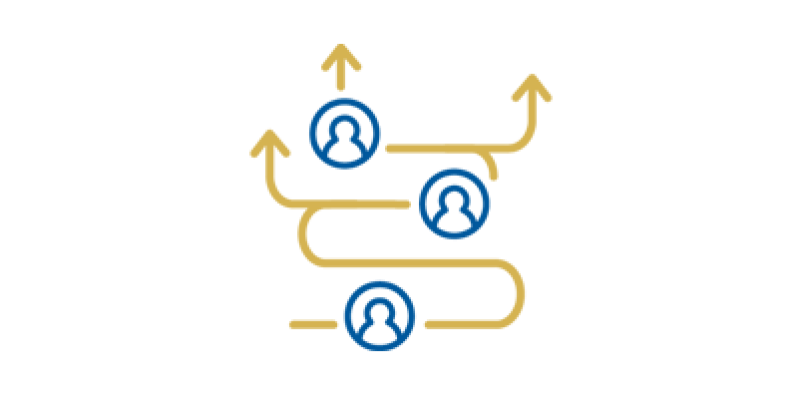The U.S. National Science Foundation Regional Innovation Engines (NSF Engines) program was established to advance transdisciplinary, collaborative, use-inspired and translational research and technology development in key technology focus areas.
Each NSF Engine can receive up to $160 million to support the development of regional coalitions of researchers, institutions and companies to conduct research and development that engages people in the process of creating solutions with economic and societal impacts. Through the process, NSF Engines will train and develop the local workforce and grow regional innovation ecosystems throughout the U.S.
The NSF Engines program provides up to 10 years of funding to establish each NSF Engine, with the option to get two years of funding for planning before the official launch of an NSF Engine.
The NSF Engines program expects more groups to lead and participate in NSF Engines, including:
- Groups with distinct geographic reach.
- Groups that open opportunities for all Americans.
- Groups new to NSF or government funding.
 On this page
On this page
Inaugural NSF Engines Announcements
What are the goals of the NSF Engines program?
Boost innovation capacity
- Increase the level of commercial investment in research and development (R&D) activities across distinct geographic regions, particularly regions that have not fully participated in the technology boom of the past few decades.
- Develop global leaders in use-inspired research in topic areas of national importance.
- Embed a culture of innovation and inclusion within participating organizations.
Create sustainable innovation ecosystems
- Form trusted partnership networks across industry, academia, government, nonprofits and communities of practice to foster scientific innovation.
- Transition technological and educational innovations to address national and societal challenges.
- Implement pathways for sustained growth of regional innovation ecosystems.
Demonstrate inclusive economic growth
- Harness the nation’s geography of innovation by engaging all those interested in science and engineering research and innovation, regardless of their backgrounds, organizational affiliations or geographic locations.
- Deliver economic and societal impacts informed by regional stakeholder needs.
- Train and educate all Americans to become technicians, researchers, practitioners and entrepreneurs based on regional workforce needs.
- Create thriving companies focused on key technology areas.
Why are NSF Engines important and how are they different?
The NSF Engines program embeds a culture of innovation and forms coalitions of diverse sectors and organizational types such as small businesses, two-year colleges, and minority-serving institutions. The program is unique in its approach to:
- Speed and scale innovation and translation in key technology areas.
- Address societal and economic challenges.
- Engage all Americans.
- Drive economic growth in regions that have not fully participated in the technology boom of the past few decades.
- Build a new model for driving breakthrough, cross-sector research.
NSF Engines timeline
- May 2022: NSF Engines program launches.
- Spring 2022: NSF Engines hosts roadshow with 40,000+ attendees.
- July 2022: NSF publishes nearly 700 concept outlines.
- May 2023: NSF announces 44 NSF Engines development awardees.
- June 2023: NSF selects 34 NSF Engines semifinalists.
- July 2023: NSF and U.S. Economic Development Administration officially partner to coordinate across NSF Engines and Tech Hubs.
- August 2023: NSF announces 16 NSF Engines finalists.
- September 2023: Builder Platform for awardee support announced.
- January 2024: 10 NSF Engines announced.
- April 2024: New NSF Engines funding opportunity announced.
- July 2024: NSF publishes data from letters of intent submitted to the NSF Engines program.
- October 2024: NSF advances 71 teams in the NSF Engines competition.
What makes the NSF Engines program truly groundbreaking?
This investment represents the broadest and most significant investment in place-based science and technology research and development in the nation's history since Congress created the modern university system over 160 years ago with the "Morrill Land-Grant Acts." Similarly, the NSF Engines program has the transformative capacity to dramatically expand economic opportunity in communities across the country, while establishing a new frontier for American innovation and ensuring the nation remains globally competitive for decades to come.
While most innovation ecosystem programs fund individual startups and/or economic development projects for short windows, often one to four years, the NSF Engines program is making long-term investments in ecosystems at an unprecedented scale and time frame — up to 10 years and $160 million per awardee. If NSF and the awardees are successful, there will be more world-class innovation ecosystems in regions of the country that have historically been left behind.
The end goal is to catalyze groundbreaking technologies in topic areas as diverse as semiconductors, biotechnology and advanced manufacturing while stimulating regional job growth and economic development. The results will be inclusive regional innovation ecosystems capable of evolving and sustaining themselves for decades to come.
There is already early evidence that cross-sector partners see value in this model, given NSF's investment has already been matched 2-to-1 by private, philanthropic and other government sources.
This is a new space for NSF and the federal government. NSF is excited about investing in the new frontier of American innovation using a model that is designed to be inclusive, localized and audacious.
Collectively, the Engines have three core functions
Use-inspired research and development
Translation of innovation results to society
Workforce development leading to higher-wage, better quality jobs
What is a "region of service"?
The NSF Engines program is a "place-based" initiative, with an emphasis on stimulating innovation-driven economic growth within a well-defined "region of service." A region of service is the geographical area impacted by the NSF Engine’s efforts and activities. The region of service should be geographically contiguous. Examples might include commuting zones, labor market areas, metropolitan statistical areas, and areas defined by ecological or geological boundaries. For the NSF Engines program, a region of service may include multiple continuous geographical areas (e.g., multiple adjacent commuting zones, a group of communities within a regional watershed.) When submitting a proposal, applicants must demonstrate that the proposed region of service is tightly interconnected (in vision and stakeholder alignment) and that the proposed topic area is supported by a multi-sector regional coalition that includes regional leadership and/or by a coalition of partners that has demonstrated the capacity to collaborate, align priorities, and coordinate as a cohesive region.
Teams should consider how the size of the region of service will impact outcomes. Choosing a large region of service (e.g., entire state(s) or multiple high-density metropolitan areas) could raise serious concerns about the ability to measure and assess tangible impacts.
Innovation ecosystem life cycle
What is the difference between a nascent and an emergent NSF Engine?
There are multiple innovation ecosystem models that outline the development process to maturity. The graphic below illustrates the growth of an innovation ecosystem within the NSF Engines program using a five-phase model. NSF reviews both the region's maturity and the maturity of the technology area when making a determination of whether a region is nascent or emergent.
Development phase: Initial scope is defined and strategic plans are developed.
Nascent phase: Organization and partnerships are solidified and innovation activities ramp up.
Emergent phase: Technological products and services and workforce capabilities are scaled, and the innovation ecosystem starts to attract sizeable external funding towards promoting innovation-based economic activity.
Growth phase: Innovation ecosystem grows as a national leader — attracting increasing levels of economic activity and business creation — with underlying support from state, local and federal governments.
Mature phase: Innovation ecosystem is well established and can sustain itself without NSF funding.










